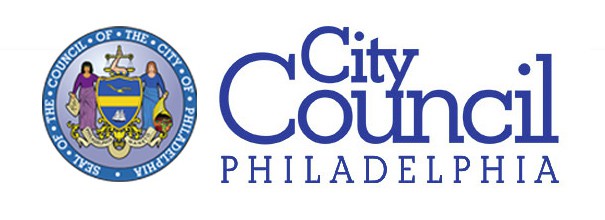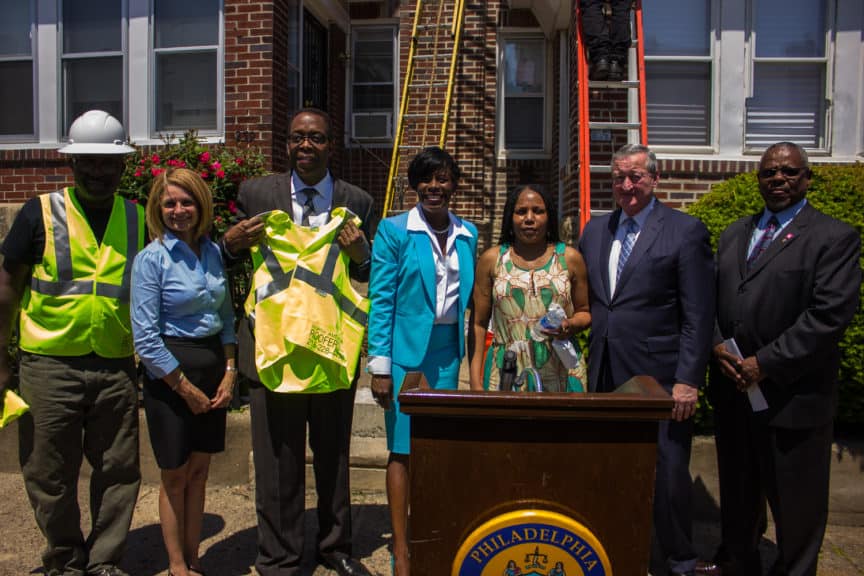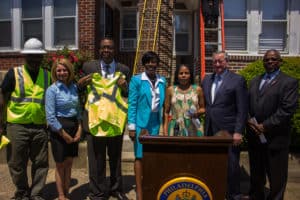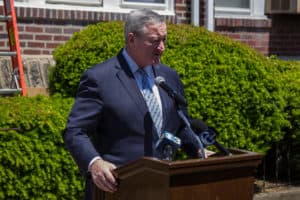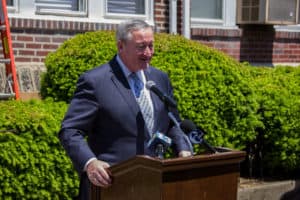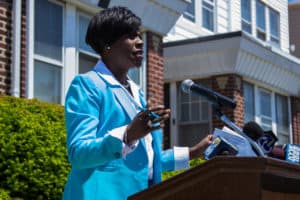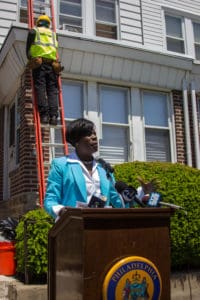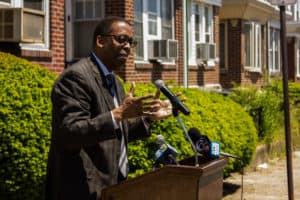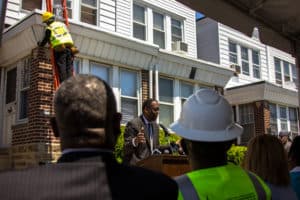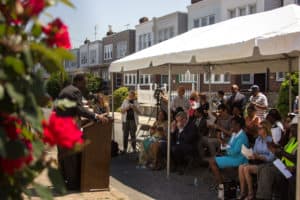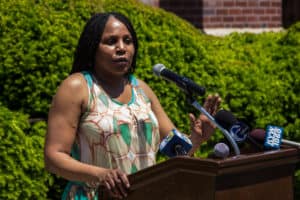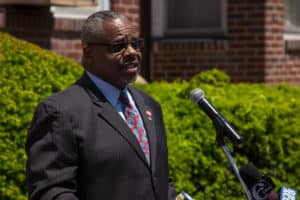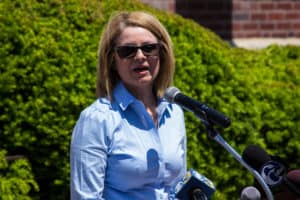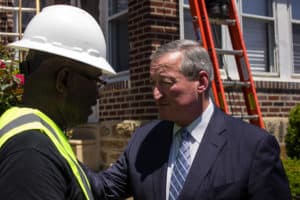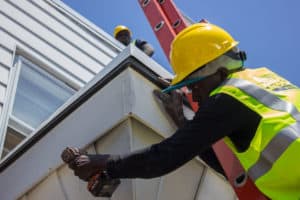Ramped-Up Housing Preservation Programs Will Help Stabilize Neighborhoods, Create Jobs
Philadelphia, May 17, 2017 – Mayor Jim Kenney, Council President Darrell L. Clarke (5th District), and Councilwoman Cherelle Parker (9th District) on Wednesday joined City housing officials and affordable housing advocates to celebrate fresh funding for key City housing preservation assistance programs.
Thousands of Philadelphians on waiting lists for the Philadelphia Housing Development Corporation’s (PHDC) Basic Systems Repair Program (BSRP), Adaptive Modifications Program (AMP), and Weatherization Assistance Program (WAP) will soon receive urgent home repairs and modifications that will allow them to remain in their houses for years to come. The first of many residents have begun receiving assistance because of $100 million authorized by City Council last year to eliminate the three-to-five year waiting lists for programs that assist with home repairs, long-term disability modifications, and energy-efficiency weatherization.
“These programs are very important to our most vulnerable neighbors,” Mayor Kenney said. “These funds help repair roofs, fix heaters, replace sewer pipes, and enable other repairs that not only help a homeowner’s quality of living, but help keep them in their homes by providing these much needed repairs that may be prohibitively expensive otherwise.”
“Housing preservation assistance is a cost-efficient and highly effective way to create jobs, prevent homelessness and displacement, and stabilize neighborhoods at risk for decline,” Council President Clarke said.
“With the help of committed partners in the Administration and the affordable housing advocacy community, Philadelphia can be an example to other cities of managing growth in an equitable way. Homes are not islands; we should all care about our neighbors and about making sure every Philadelphian is able to live in a community of choice.”
“As a longtime advocate for housing preservation, I am pleased to have one of the first homes impacted by these additional funds be in the 9th District,” said City Councilwoman Cherelle Parker.
“Residents in this district, and across the City, have been waiting for services, but funding has been very limited. These additional funds give PHDC the ability to positively impact so many homeowners across our great city! I am glad to be a part of that today.”
In 2016, Council President Clarke proposed a modest increase in the real estate transfer tax to raise $100 million to eliminate the BSRP, AMP, and WAP backlogs and to ensure more Philadelphians could remain in homes suffering from wear caused by age and weather. Low-income residents and seniors on fixed incomes often struggle to pay for home repairs, which left unaddressed can create larger problems such as high energy bills, mold, or severe structural damage.
As of 2014, Philadelphia had a homeownership rate of 52.9 percent, higher than the average for the 30 largest U.S. cities. Nearly 36 percent of Philadelphia homeowners have annual household incomes at or below $35,000 – the second highest low-income homeownership rate among the 30 largest cities. Philadelphia’s housing stock is also older relative to other cities: half of all owner-occupied housing here was built before 1945.
City officials and affordable housing advocates spoke outside the home of Hagar Redmond, who was receiving plumbing and insulation repairs more than three years after being approved for BHRP assistance.
“I am thankful to City Council and PHDC for allowing me to have one less thing to worry about,” said Redmond, who works as a Philadelphia Police dispatcher and resides with her daughter and grandson. “Having a leaky roof and cracked floor sent my utility bills up, and made me worry about making ends meet. Thanks to this program, I can have peace of mind that my grandchild will be warm in winter.”
“Since January, PHDC has been hiring and training additional staff and partnering with additional contractors to develop an effective strategy to administer these additional funds to the existing waiting list,” said Fred Purnell, Deputy Director for Housing and Community Development. “We are excited to be here today to serve this resident, and look forward to serving many Philadelphians in significantly less time.”
Maria N. Gonzalez, president of HACE and board vice president of the Philadelphia Association of CDCs (PACDC), said: “Community development advocates have long been frustrated by the limited amount of resources available to meet demand for affordable housing assistance. This new funding to attack waiting lists for critical home repair programs is a great relief, and will go a long way toward making sure more Philadelphians live in healthy and affordable housing.”
BSRP provides free repairs to roofs, electrical, plumbing and heating systems for owner-occupied homes in Philadelphia. AMP is designed to help Philadelphians with permanent physical disabilities remain in their homes. WAP provides free weatherization and energy-efficiency improvements to owner-occupied houses and tenant-occupied rental units located in the City of Philadelphia. Each program has income requirements and other criteria for participation.
For more information on these programs and to apply for assistance, residents are encouraged to visit the website: https://www.phila.gov/dhcd/home-repair/.
# # #
Council President Darrell L. Clarke is serving his second term as the President of Philadelphia City Council. He represents Philadelphia’s 5th Council District. More information at phlcouncil.com/DarrellClarke
Councilwoman Cherelle L. Parker represents the 9th District, which includes East Mt. Airy, West Oak Lane, East Oak Lane, Lawncrest, Burholme, Olney and parts of Oxford Circle and Logan. She is Chair of Council’s Committee on Labor and Civil Service and Vice Chair of Council’s Committee on Commerce and Economic Development.
